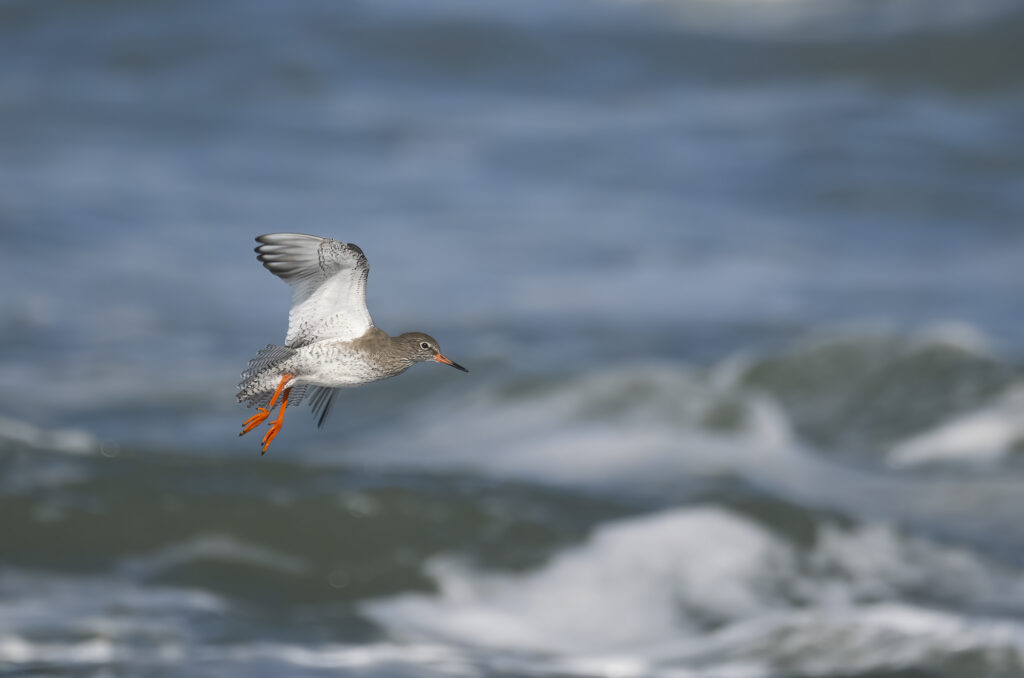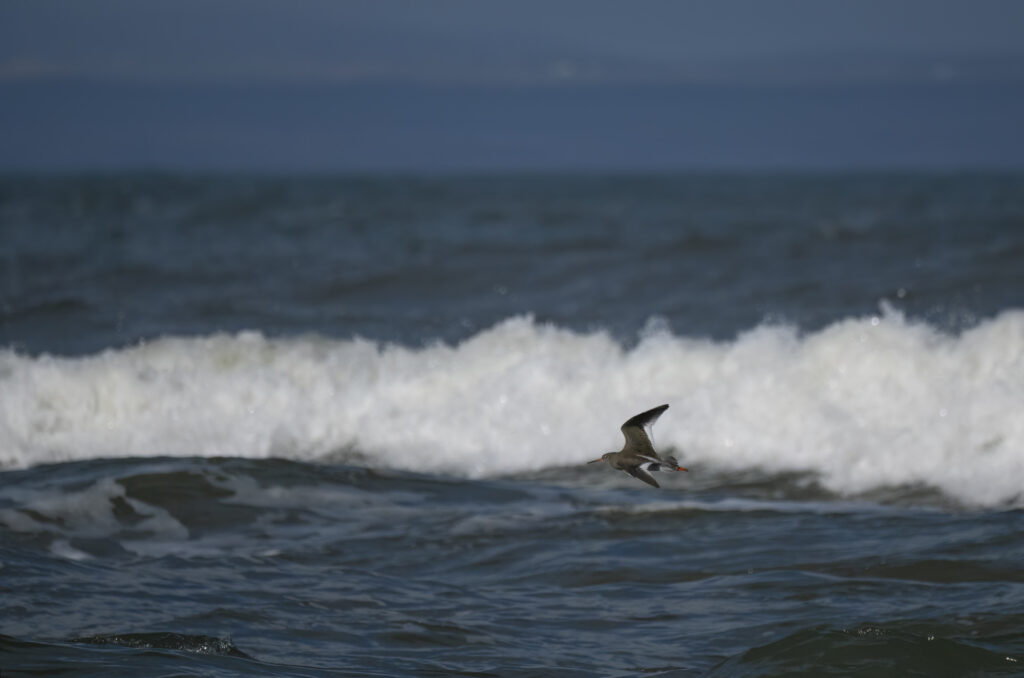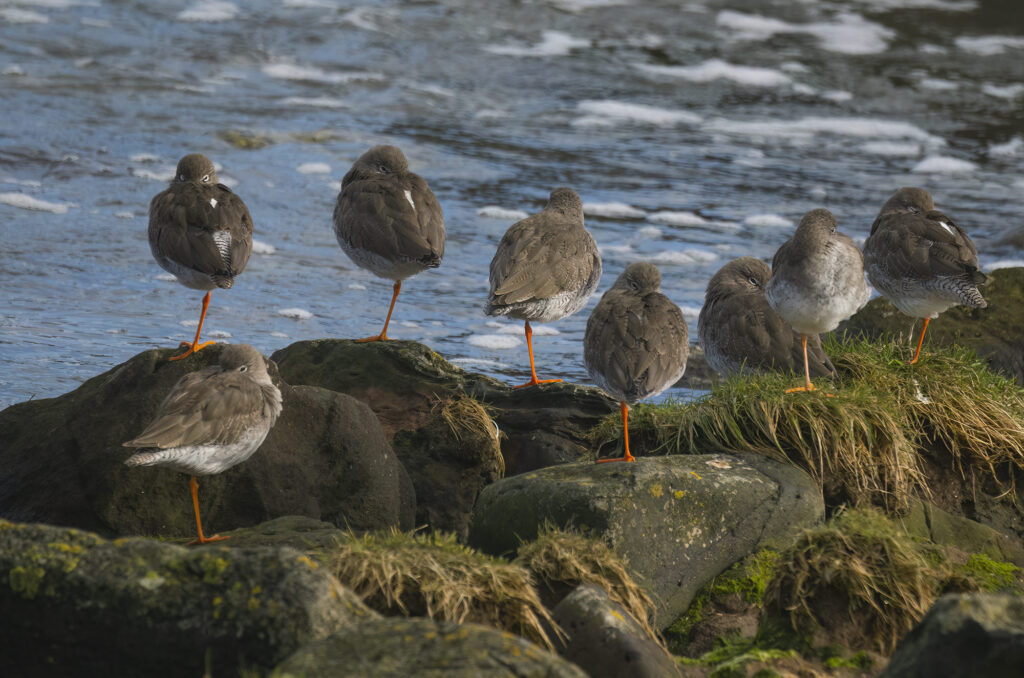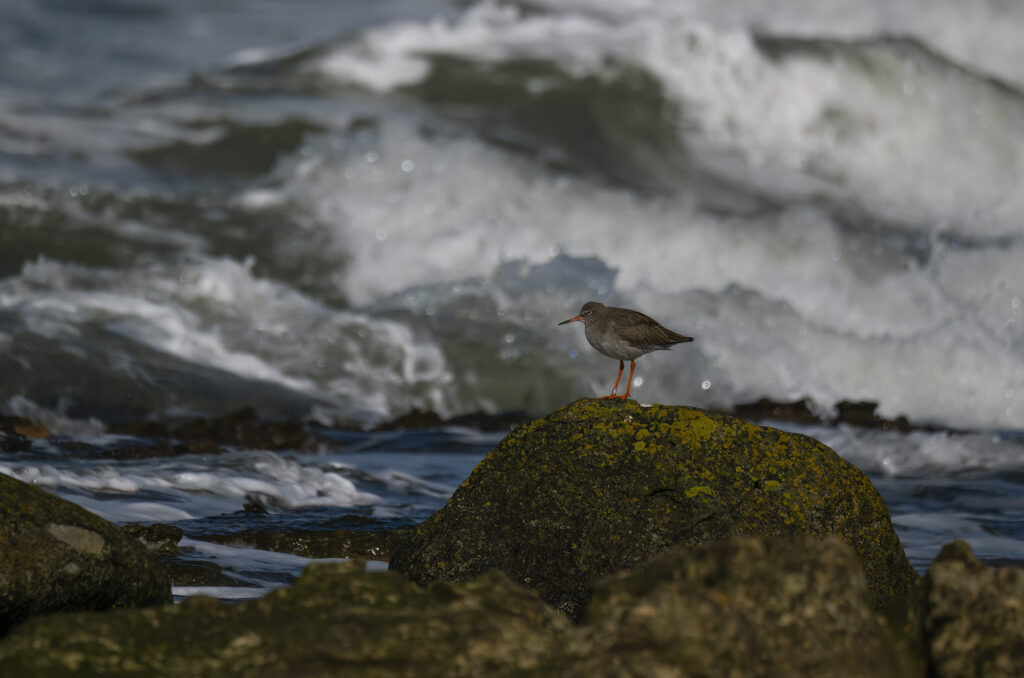The turnstones remained relaxed as I sat motionless on a seaweed-covered rock. While they rooted around for food, they shuffled ever closer, engrossed in their task. I watched them through my lens, occasionally depressing the shutter when they hopped onto a mound of grass, and the opportunity presented itself for a clean shot. Dog walkers and families headed along the coast path behind where I had positioned myself, but the turnstones – and oystercatchers behind them – mostly kept their heads down, unconcerned. Then, out of nowhere – and for no obvious threat that I could see – the alarm call sounded. The familiar piping ‘teu-tu-tu’ sent everything into the air, including the turnstone I had my lens pointed at. The “watcher of the marshes” had struck again.

To be fair to the redshank, it is entitled to be anxious. You would be too if you needed to look out for predators hunting you from the ground and the air. If you watch mixed flocks of waders for any length of time, you will notice that the redshanks tend to be the first to alert the other birds to signs of danger – which gave them their reputation as the wetland wardens.
Seeing red
While watching such flighty birds can be tricky, identifying a redshank is relatively straightforward, thanks to its striking orange-red legs (shanks) and bill with a black tip. The speckled brown plumage of these large sandpipers is less distinctive but does at least distinguish them from the spotted redshank, which also has red legs. In flight, the redshank’s legs stick out behind it, projecting beyond its tail. It also has a broad white trailing edge to the wings and a white ‘V’ shape on its back.

Predominantly found in coastal areas, estuaries, mudflats, and marshes, you can also spot redshanks inland around freshwater habitats such as flooded fields and wet meadows. These birds prefer shallow water bodies with ample vegetation cover, providing both food sources and nesting sites. They are primarily carnivorous, feeding on a diverse selection of subterranean prey such as worms, insects, crustaceans, and molluscs. Their long, probing bills are perfectly adapted for foraging in mud and shallow water, allowing them to efficiently locate and capture their food.
Red-y for action
Getting close to redshanks isn’t easy, as I have already indicated. Their watchful nature means it is best to stay still and let them come to you. My experience is that flocks of these birds seem to be more on edge than isolated individuals – with the exception of the group in the image below – and I have had some of my best redshank encounters by following a single bird with my lens. They are often active, so when photographing them, I have my camera ready for action shots, with my shutter speed high enough to ensure sharp images.

While Redshank populations in the UK remain relatively stable, they face the threat of habitat loss and degradation due to human activities such as coastal development, pollution, and climate change. Conservation efforts focused on habitat preservation, restoration, and management are crucial for ensuring the long-term survival of these iconic wetland birds. They certainly don’t need any more reasons to be worried.

Living on their nerves as well as a diet of invertebrates, the redshanks may be the worrywart waders on the water – but they are a striking and spirited subject to point your lens at.

